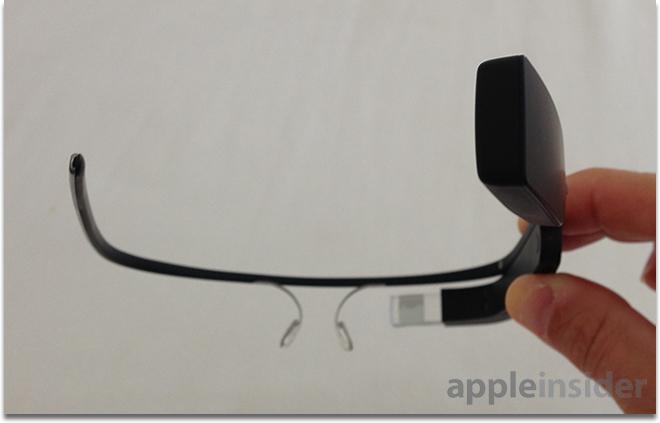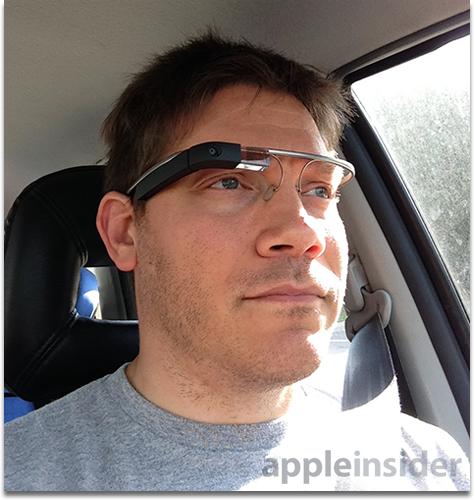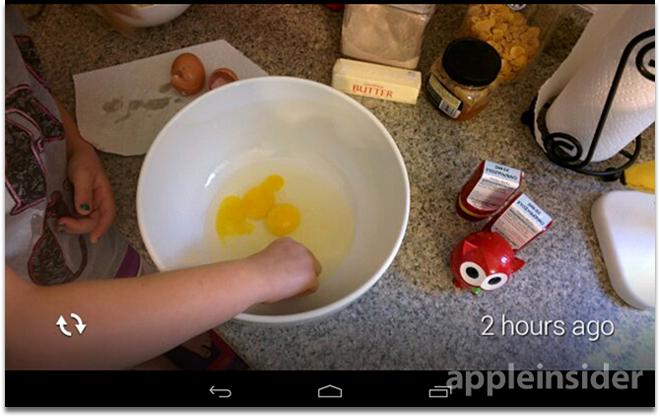Using Google Glass: A series of awkward encounters
For all its technical achievements and potential uses, there's really one question that can make or break Google Glass: How do people react when you wear it in public? Here are a series of encounters in the life of a Google Glass Explorer.
Encounter 1: A good start
I went to Harbor Freight to buy a drill to put holes in masonry. I'm hiding the home entertainment cables in my house and have to route some through brick. The young woman behind the register said, "Oh, are those those glasses? What are they like? Is everyone going to have them in a few years?"
She was curious, had heard enough about them to know they were something, and was shocked to hear that they cost the $1600 (with tax) that Google is asking of developers to join its "Explorer" program.
So far, so good. This was a positive response.
Encounter 2: Suspicion
This was the real destination of my errands, and Glass ran out of battery just as I was trying to get there.
I arrived at the paintball shop to fill CO2 canisters for use with my modified SodaStream carbonator. The owner behind the counter viewed me with suspicion, and asked exactly what I was wearing on my head. He had never heard of Google Glass.
"Basically a cell-phone for the head," I explained. "I get driving directions, e-mails and phone calls to it."
Unfortunately, the owner then became concerned that I might be filming him, without even knowing it included a camera. I explained to him that the batteries had died, so I couldn't film anything. But he wasn't buying it, and he became angry.
Perhaps this is an inherent problem with head-mounted displays. In 2012, Prof. Steve Mann, who pioneered cameras as wearable computers, was physically assaulted by McDonald's employees in France. The employees claimed they were protecting the privacy of staff and other customers.
While the violent incident with Mann is an extreme example, it still captures a major issue Google will have to overcome if it wants to position Glass as a mainstream product. Wearing a head-mounted camera at all times in public will be seen by many as a danger to privacy in an increasingly surveillance-friendly society.
Encounter 3: Enough
I stopped to fill up gas while wearing Glass. I felt the eyes of the man at the register on me as I paid cash for the fuel. If there were a silent button to press under the counter, it's entirely possible he had his finger on it.
Frankly, by this point, I became so uncomfortable wearing Glass that I didn't go out a lot wearing the headset. Some people feel threatened, a few are interested, and a few are bored by it. But almost everyone looks at you like the nerd you are.
There was an issue of Wired years ago with Brad Pitt on the cover wearing a Bluetooth headset, captioned "Ditch the headset. If he can't pull it off, what were you thinking?" In its current incarnation, Google Glass feels like it's destined to become the next-generation, ultimate Bluetooth headset — an unfashionable, awkward accessory, except this one currently costs $1,500.
What about at home?
Shamed in public, I stuck to wearing Google Glass around the house. The experience there wasn't much better: My wife was incredibly annoyed by them.
Having a screen constantly in your face can arouse suspicion among others — even loved ones. My wife was sometimes convinced I was paying attention to something else, even if I was talking and looking straight at her. To be honest, I'm sometimes guilty of that without Glass, but just having them on my head didn't help my case.
My wife had friends over. One wanted to try them on and she was really excited about it. Another was pretty fearful of it. But her more tech-savvy husband couldn't believe I had them, and he couldn't wait to learn all about it. For a few minutes we took turns searching the web by voice with "Okay, Glass" — even though this really isn't that novel.
When my dad and his girlfriend came over for dinner, I put Hangouts on her iPhone and his Android (running CyanogenMod 10), and we tried to hold a video chat. We got it working, but seeing my point of view without a face on their screens ended up looking like a bad music video. It was really disorienting, and I don't think they'll do that again anytime soon.
Conclusions
Google has an uphill battle to convince people they need Glass. They're trying to do this with the recent spate of videos showing people searching things, converting weights, measures and currencies, getting driving instructions — normal uses.
There's already a video of a person making a marriage proposal through Glass. Some Explorer videos include a teacher who goes to CERN and gives his a class back in Michigan a virtual tour via hangout. There's also pro tennis player Bethanie Mattek-Sands, who says she uses them to organize her life.
It seems to me that there's not a lot of advantage over Google Now or other means of Hangouts. The most interesting application that couldn't be done otherwise was Mattek-Sands' observation about discovering how much her head moves to the side while making a shot. Perhaps the utility of Glass is in combining these things we do just as well in our phones already, but by putting it on the head they become more instantly accessible.
Unfortunately, getting over the idea that wearers aren't ignoring the people around them — and convincing everyone else that wearing a camera in public isn't a violation of privacy — is going to be difficult. In my early tests, I'm not sold.
 Victor Marks
Victor Marks
















 Amber Neely
Amber Neely
 Thomas Sibilly
Thomas Sibilly
 AppleInsider Staff
AppleInsider Staff
 William Gallagher
William Gallagher
 Malcolm Owen
Malcolm Owen
 Christine McKee
Christine McKee










235 Comments
Google Glass will become a prime example of a consumer product launch that failed by taking a technology too far. However, I can see professional applications where this will prove invaluable.
There are going to be some bumpy reactions ahead for Glass. It is going to be tough to ban them though. If they try to pass laws against glass they are going to apply to cameras and cell phones with video recorders as well. Try and tell people those are banned >:)
Good article...there seemed a genuine effort not to be too critical. Not for me, though. When the intel iMac came out, I bought one straight away. Same with intel white MacBook (& G3) before that. Bought the original shuffle, original ATV, original iPhone. Got an ipad2....would have got the original iPad and MBA except a little thing called a recession kicked me in the n*ts! So I think I have a good track record of being an early adopter. I was pleased with every Apple purchase I made. In fact, more than pleased. But the google glass, it just doesn't feel right and I will pass. :)
Good article...there seemed a genuine effort not to be too critical.
Not for me, though. When the intel iMac came out, I bought one straight away. Same with intel white MacBook (& G3) before that.
Bought the original shuffle, original ATV, original iPhone. Got an ipad2....would have got the original iPad and MBA except a little thing called a recession kicked me in the n*ts!
So I think I have a good track record of being an early adopter. I was pleased with every Apple purchase I made. In fact, more than pleased. But the google glass, it just doesn't feel right and I will pass.
Meh. most of your 'early adopter' are fairly late stage low risk adoptions, and all very Apple specific... doesn't equate to the 'I'll get one and see if my life is better for it, even though I have no idea why I'm getting it" early adopter life-modder attitude needed for something like this... (the ATV is about the only 'wow... wonder what this is good for' purchase... and only if didn't have an iTMS account and a house full of Macs and iPods).
If you said you bought MP3 player in 2002, a Windows Tablet in 1995, or a diskless NeXTCube in 1987... then I'll grant you 'trailblazer' status.
Useful article. Technology moves on, and it's too early to tell whether GG will be the Stanley Steamer or the Model T of wearable technology. We gotta start somewhere and kudos to Google for putting it out there. (Kinda hurt to say that!) I think we are headed in this direction, but I don't think this particular formulation is the ultimate form, it will take some time and field testing of variants to settle it. Perhaps such things will end up being for specialized use (surgeons and gamers for instance) rather than everyday wear. As for freaking people out? Well, the first cars scared the horses. It'll get sorted out.